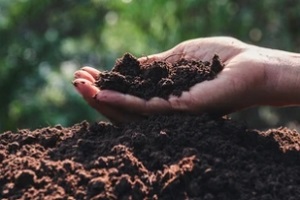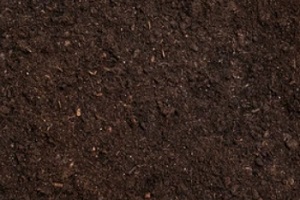 Soil is just as necessary for life as sunlight and water, but few people understand precisely what it is and how it is formed. Without soil, most of our crops would be unable to grow, and humans and animals alike would not have a dependable and nutritious source of food. Here is a closer look at how this life-sustaining material is formed.
Soil is just as necessary for life as sunlight and water, but few people understand precisely what it is and how it is formed. Without soil, most of our crops would be unable to grow, and humans and animals alike would not have a dependable and nutritious source of food. Here is a closer look at how this life-sustaining material is formed.
What Is Soil?
In order to understand how soil is formed, first it is necessary to have a better idea of what it is. In short, soil is a natural mixture that is made up of materials, organic substances, gasses and liquids. Its composition can vary, and all of the different types of soil have their own form and structure.
The average composition of soil is:
45% Minerals
The bulk of soil is made up of minerals such as sand, gravel, silt, clay and stones. These are what give the soil its gritty texture, and these are the parts that can be seen with the naked eye.
25% Air
Air makes up the pores of soil. It is essential for helping plants to grow and allowing other living organisms within the soil to survive.
25% Water
Soil is, generally speaking, roughly a quarter water, but this amount can vary depending on the soil’s holding capacity as well as precipitation.
5% Organic Matter
Humus, which is composed of dead plants and animals as well as microorganisms, makes up around 5% of soil.
How Is Soil Formed?
Soil owes its existence to the process of rock weathering, which occurs when rocks are broken down into smaller particles due to contact with water, air or living organisms. This type of weathering may occur physically, chemically or biologically.
Physical Weathering
Physical weathering refers to the disintegration of rocks into smaller particles without changing their molecular structure. A few examples of this are wind that has blown on rocks or heavy downpours of rain or waves from the sea causing the gradual fragmentation of rock particles into sediments that eventually turn into soil.
Chemical Weathering
 Chemical weathering occurs when chemical reactions inside rocks cause their mineral composition to change. Here is a closer look at some of the ways this can occur.
Chemical weathering occurs when chemical reactions inside rocks cause their mineral composition to change. Here is a closer look at some of the ways this can occur.
Carbonation
In carbonation, carbon dioxide from the air and living organisms dissolves in water to form a substance known as carbonic acid that acidifies the water and rocks and leads to additional chemical reactions with rock minerals.
Oxidation
When oxygen from the air reacts to iron in the rocks to form iron oxides, this is known as oxidation. It appears as a rusty brown coloring on rocks.
Hydrolysis
When rainwater seeps into rocks, the hydrogen ion within the water reacts to the metallic ions within the rocks. This can cause the rock minerals to dissolve.
Biological Weathering
Biological organisms can also facilitate the fragmentation of rocks. For example, mosses and tree roots can grow or penetrate through rocks, creating larger pore spaces that can pull rocks apart over time. Similarly, animals can burrow through rocks and cause disintegration, while microorganisms such as lichens can release chemicals that break down the minerals in rocks.
What Factors Influence The Formation Of Soil?
Outlined below are some of the biggest factors that impact the formation of soil.
Topography
The shape of the earth’s surface area influences soil formation. For example, land that is very steep is more vulnerable to erosion by water and wind, which results in the movement of rock sediments and downward washing of rock minerals toward valleys. Therefore, the soils found in valleys tend to be richer in organic matter, darker in color and more fertile, whereas the soil found on hilltops tends to be less fertile, more eroded and generally less favorable to plant growth.
Climate
One of the biggest factors that influences the formation of soil is the climate. For example, rainfall and temperature patterns can all contribute to soil formation. The water from rain can facilitate both physical and chemical weathering.
Moreover, the different climates found around the world are responsible for the diversity in soils. In places with heavy rainfall, for example, the soil is more vulnerable to erosion, leaching and weathering. These soils also tend to be more acidic because minerals like potassium, magnesium and calcium are often replaced by the hydrogen atoms in rainwater.
Areas of low rainfall, in contrast, are less susceptible to leaching and tend to be more alkaline because calcium carbonates build up in the upper layers of soil in the absence of leaching.
Warmer temperatures, meanwhile, can encourage quicker weathering because plants and microbes flourish in these temperatures. Colder climates are less hospitable to plants and microbial activities, which means that rock weathering tends to be more gradual there.
Organisms
Another important factor in soil formation is living organisms. Areas with high vegetation tend to be rich in humus, which builds up as dead plants and fallen leaves are decomposed by the microorganisms in soil. Microorganisms feed on sugars and carbohydrates with inorganic matter and leave waxes and fats behind in the soil. This, in turn, creates humus.
Parent Materials
 The parent material of soil is generally weathered rock. However, these rocks can be igneous or sedimentary, or they could be geologically young sediments on bedrock. The type of soil that is formed depends on the material that it came from. Soil that is formed from weathered granite, for example, is sand.
The parent material of soil is generally weathered rock. However, these rocks can be igneous or sedimentary, or they could be geologically young sediments on bedrock. The type of soil that is formed depends on the material that it came from. Soil that is formed from weathered granite, for example, is sand.
A silicate mineral in granite, quartz, is highly resistant to weathering, which causes the granite to disintegrate into the gritty particles of sand that we all recognize. Rocks that contain feldspar are broken down into fine clay particles thanks to the mineral silicates’ low resistance to weathering.
Time
The properties of soil can vary depending on how long the soil has been weathered. The longer that soil is exposed to soil-forming factors, the more developed it will be.
Reach Out To The Northern Virginia Soil Experts
At Dirt Connections, soil forms the basis of our business. Whether you need nutrient-rich soil for a gardening project or fill dirt for home improvement, we can deliver high-quality dirt throughout the Northern Virginia area. Get in touch today, and our knowledgeable staff will be happy to answer your soil-related questions and provide you with an estimate.
Summary

Dirt Connections was started with one goal in mind: providing quality residential and commercial construction services to clients on time and on budget. Reach out for more information on how we can support your next project.
For your convenience our estimates are free and by appointment. Call 703-940-9949 for a free estimate today!









































